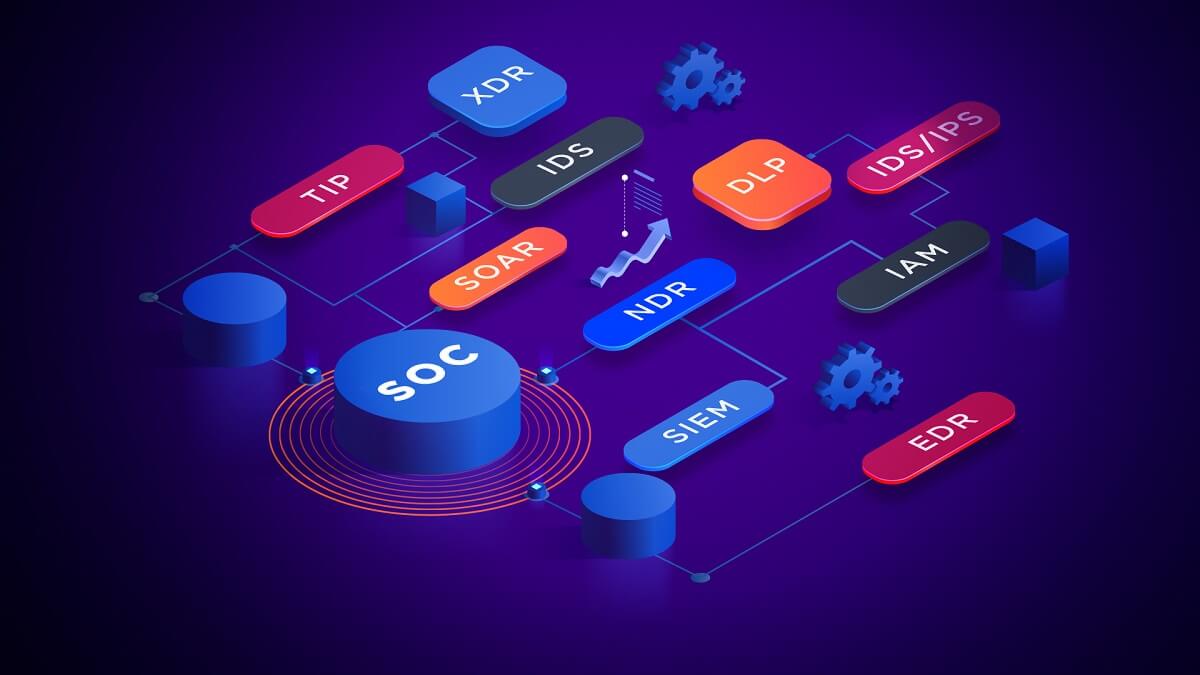Security Operations Center (SOC) analysts play a crucial role in protecting organizations from an ever-growing array of threats. To effectively monitor, detect, analyze, and respond to these challenges, SOC analysts rely on a diverse set of powerful tools. This comprehensive guide explores the essential tools every security analyst should be familiar with, providing insights into their functions and recommending some of the most popular solutions in each category.
SIEM: The Central Hub of Security Operations
Security Information and Event Management (SIEM) systems serve as the cornerstone of any robust SOC. These platforms collect, normalize, and analyze security data from various sources across the network, providing real-time insights into potential threats and policy violations.Key functions of SIEM tools include:
- Centralized log management
- Real-time monitoring and alerting
- Incident response coordination
- Compliance reporting
Popular SIEM solutions:
- Splunk: A powerful platform for searching, monitoring, and analyzing machine-generated big data.
- Security Onion: A free and open-source platform for threat hunting, network security monitoring, and log management.
- LogRhythm: An enterprise-class platform that combines SIEM, log management, and machine analytics.
- IBM QRadar: A comprehensive SIEM solution for threat detection and compliance.
- ArcSight: A SIEM platform by Micro Focus for security monitoring and log management.
IDS/IPS: Real-time Threat Detection and Prevention
Intrusion Detection Systems (IDS) and Intrusion Prevention Systems (IPS) are critical components of a layered security approach. While IDS focuses on monitoring and alerting, IPS takes it a step further by actively blocking or preventing detected threats.Popular IDS/IPS tools:
- Snort: Open-source network IDS/IPS for real-time traffic analysis.
- Suricata: High-performance IDS, IPS, and network security monitoring engine.
- OSSEC: An open-source host-based IDS for log analysis and file integrity checking.
- Cisco Firepower: A comprehensive IPS solution providing advanced threat protection.
- Palo Alto Networks: Offers next-generation firewall capabilities with integrated IPS functionality.
EDR: Securing the Endpoint Frontier
Endpoint Detection and Response (EDR) solutions focus on detecting, investigating, and responding to suspicious activities on endpoints such as computers, servers, and mobile devices.Key features of EDR tools:
- Advanced threat detection
- Incident response capabilities
- Continuous endpoint monitoring
Popular EDR solutions:
- CrowdStrike Falcon: Offers advanced threat intelligence and endpoint protection.
- SentinelOne: Provides autonomous endpoint protection through AI-powered detection and response.
- Carbon Black: Delivers advanced threat detection and response capabilities.
- Microsoft Defender for Endpoint: Integrated endpoint security platform.
SOAR: Streamlining Security Operations
Security Orchestration, Automation, and Response (SOAR) solutions enhance the efficiency of security operations by automating incident response and orchestrating various security tools.Key benefits of SOAR platforms:
- Automation of repetitive tasks
- Streamlined incident response
- Improved tool integration and coordination
Popular SOAR tools:
- Palo Alto Networks Cortex XSOAR: Automates security operations and incident response.
- Splunk Phantom: Enables automation of security workflows.
- Swimlane: Provides orchestration and automation for SOC processes.
TIP: Leveraging Threat Intelligence
Threat Intelligence Platforms (TIP) aggregate, analyze, and share threat intelligence data from various sources to improve threat detection and response capabilities.Popular TIP solutions:
- Cisco Talos: The world’s most comprehensive real-time threat detection network.
- ThreatConnect: Aggregates, analyzes, and acts on threat intelligence.
- Recorded Future: Provides real-time threat intelligence.
- MISP: Facilitates sharing of threat intelligence.
OSINT: Harnessing Open-Source Intelligence
Open-Source Intelligence (OSINT) tools help analysts collect and analyze publicly available information to generate actionable intelligence.Key applications of OSINT:
- Threat identification
- Contextual analysis
- Proactive defense
Popular OSINT tools:
- OSINT Framework: A comprehensive collection of OSINT tools and resources.
- URLSCAN.io: An online service for analyzing and inspecting website contents.
- Maltego: A data visualization tool used for OSINT and link analysis.
- Recon-ng: A web reconnaissance framework with numerous modules for OSINT tasks.
- theHarvester: A tool for gathering emails, subdomains, hosts, and other information from public sources.
Additional Essential Tools for SOC Analysts
Vulnerability Management
- Tenable.io: Comprehensive vulnerability management platform.
- Qualys: Cloud-based security and compliance solutions.
- Nessus: Widely used vulnerability scanner.
Malware Analysis and Sandboxing
- Any.run: Investigate malware in a sandbox environment, also provides threat intelligence.
- VirusTotal: A web-based service for scanning files and URLs for potential malware.
- FireEye Malware Analysis: Advanced sandboxing solution.
- Oracle VirtualBox: Create isolated environments for malware analysis.
Log Management
- ELK Stack: Open-source log management solution (Elasticsearch, Logstash, Kibana).
- Graylog: Centralizes and analyzes log data.
- Sumo Logic: Cloud-native log management and analytics.
Digital Forensics
- FTK (Forensic Toolkit): Comprehensive digital forensics solution.
- EnCase: Provides digital investigation and forensic capabilities.
- Volatility: Open-source memory forensics framework.
The tools outlined in this guide form the backbone of a modern SOC analyst’s toolkit. By leveraging these powerful solutions, security professionals can effectively monitor, detect, and respond to the ever-evolving landscape of cyber threats. However, it’s crucial to remember that tools are only as effective as the analysts using them. Regular training, staying updated with the latest security trends, and continuous learning are essential for maximizing the potential of these tools and maintaining a robust security posture.As cyber threats continue to evolve, so too must the tools and techniques used to combat them. SOC analysts should regularly evaluate new tools and technologies to ensure they’re equipped with the most effective solutions for protecting their organizations’ digital assets.





